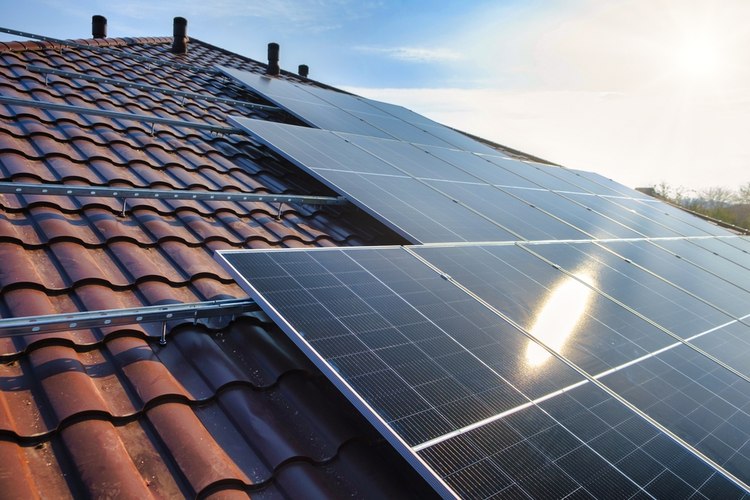Solar-Powered Air Conditioning: The Future of Home Cooling
As temperatures rise and energy costs soar, homeowners are increasingly turning to innovative solutions for efficient home cooling. Solar-powered air conditioning systems are emerging as a game-changer in the realm of energy-efficient home cooling technology. These systems harness the power of the sun to keep your house comfortable while significantly reducing your carbon footprint and energy bills.

The system typically consists of solar panels, an inverter to convert DC power to AC, and a high-efficiency air conditioning unit. Some advanced models also incorporate thermal energy storage, allowing excess solar energy to be stored for later use, further enhancing the system’s efficiency and reliability.
What are the benefits of a solar-powered cooling system?
One of the primary advantages of solar air conditioners is their potential for significant energy savings. By leveraging free solar energy, homeowners can dramatically reduce their reliance on grid electricity for cooling, which often accounts for a substantial portion of household energy consumption. This translates to lower utility bills, especially during peak summer months when cooling demands are highest.
Moreover, solar ACs contribute to a greener environment by reducing greenhouse gas emissions associated with traditional electricity generation. As an eco-friendly alternative, they align with global efforts to combat climate change and promote sustainable living practices.
Are solar air conditioners suitable for all homes?
While solar air conditioning systems offer numerous benefits, their suitability depends on several factors. The home’s location, roof orientation, and available sunlight are crucial considerations. Homes with unobstructed southern exposure typically yield the best results for solar panel installation in the northern hemisphere.
Additionally, the cooling needs of the house play a role in determining the system’s size and effectiveness. Larger homes or those in extremely hot climates may require a more extensive solar setup to meet their cooling demands efficiently.
How do solar ACs compare to traditional cooling systems?
When comparing solar air conditioners to conventional systems, several key differences emerge. Traditional ACs rely entirely on grid electricity, making them susceptible to power outages and rising energy costs. In contrast, solar-powered systems offer greater energy independence and can continue functioning during blackouts, provided there’s adequate sunlight.
In terms of initial investment, solar air conditioners generally have higher upfront costs compared to traditional units. However, the long-term savings on energy bills and potential government incentives for renewable energy installations can offset this initial expense over time.
What is the cost of installing a solar air conditioning system?
The cost of installing a solar air conditioning system can vary widely depending on factors such as the size of the home, cooling requirements, and the specific system chosen. On average, homeowners can expect to invest between $15,000 to $30,000 for a complete solar AC installation.
| System Type | Average Cost Range | Potential Annual Savings |
|---|---|---|
| Small (1-2 ton capacity) | $15,000 - $20,000 | $500 - $1,000 |
| Medium (3-4 ton capacity) | $20,000 - $25,000 | $1,000 - $1,500 |
| Large (5+ ton capacity) | $25,000 - $30,000+ | $1,500 - $2,000+ |
Prices, rates, or cost estimates mentioned in this article are based on the latest available information but may change over time. Independent research is advised before making financial decisions.
While the initial investment may seem substantial, it’s important to consider the long-term savings on energy bills and the increased value added to your home. Many homeowners find that the system pays for itself over time through reduced energy costs and potential tax incentives or rebates for renewable energy installations.
How can homeowners maximize the efficiency of their solar cooling system?
To get the most out of a solar air conditioning system, homeowners should consider several strategies. Proper insulation and sealing of the house can significantly reduce cooling needs, allowing the solar AC to operate more efficiently. Regular maintenance of both the solar panels and the air conditioning unit is crucial for optimal performance.
Additionally, integrating smart home technology, such as programmable thermostats and energy monitoring systems, can help optimize the use of solar power for cooling. These devices can adjust cooling schedules based on occupancy patterns and weather forecasts, ensuring maximum energy efficiency.
In conclusion, solar-powered air conditioning represents an exciting advancement in home cooling technology. By harnessing the sun’s energy, these systems offer an environmentally friendly and cost-effective solution for maintaining comfortable indoor temperatures. As technology continues to improve and costs decrease, solar air conditioners are poised to become an increasingly popular choice for energy-conscious homeowners seeking efficient and sustainable cooling solutions.






